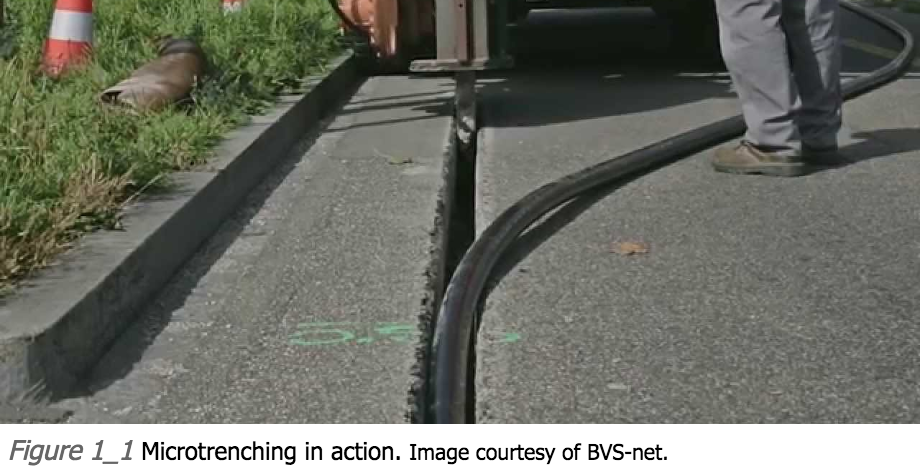As the telecommunications industry moves to expand their fiber networks to meet the market's demand for increased bandwidth to provide higher speeds and lower latency, it has caused an increase in the use of micro-trenching in infrastructure construction. Two of the most common barriers to fiber deployment within a city usually revolve around construction cost and community disruption. In the past, city councils had few options for deploying fiber to the home outside of shutting down streets to dig up, on average, 30-by-30-inch trenches, causing, as you could imagine, much disruption and an increase in the budget.
Unlike past methods, micro-trenching allows for minimal disruption and minimal cost in hopes of keeping up with the fiber demand in a more efficient manner. By using a specialized machine to make a small incision - typically no wider than 1.5 inches, and no deeper than 12 inches - micro-trenching leads to a dramatic improvement in the timeline, project scope, and budget of laying fiber.
What are the benefits?
With the decrease in trench size, crews are no longer required to be as large as in the past. The roughly five crew members needed for a micro-trenching project is a fraction of the team size required to complete older, traditional fiber deployment methods. In part because of the lighter, more specialized, and easier to handle construction equipment, and partially due to the significantly smaller project scale as a whole, companies are saving money on manpower so they can continue to focus their profits on expanding their fiber networks even further and faster.
Before micro-trenching, there were frequent community complaints of severed gas and water lines and other utility interference during fiber deployment. The smaller trench depth allows companies to avoid disruption of any current, surrounding infrastructure, which typically are buried three feet underground. Being closer to the surface, there is no concern that the micro-trenching will interfere with existing utilities, and the ducts are still buried deep enough to avoid issues with road resurfacing crews in the future, as they typically only remove the top two inches of material during those construction projects.
With the ability to open more feet of ditch and install more cable per day, companies are maximizing their ROI by minimizing the cost per home/facility passed during construction. Mike Leddy, manager of network deployment and operations with Google Fiber, says that "micro-trenching is vastly more efficient in areas with urban sidewalks" because "they can micro-trench as many as 50 customers in the time it used to take to bore to one customer" (1).

Paired with the decrease in project timeframe, is the decrease in community disruption throughout construction. Because of the smaller crews and equipment required, and because the need to dig out large trenches has been erased with the micro-trenching method, there are very few if any traffic lane closures and virtually zero complete road closures. The same method of construction is applied to sidewalks leading from the roads to the houses or businesses, so there are minimal accessibility issues that would cause a strain on the families or the business profits during the project. Because of the ability to connect 50 points in one day, where it used to take a month, communities hardly even have time to notice the construction before it is completed. The image to the right, taken from Broadband Properties' BBC Magazine, was snapped the day after installation was completed (2). An average observer would hardly notice a micro-trenching project had taken place just the day before.
It has become apparent that in order to be fully capable of providing the desired advancements brought on by 5G, companies are realizing that more and more fiber must be deployed. Because the micro-trenching technique gives these companies the ability to complete their projects in a fraction of the time and at a fraction of the cost as what older methods could offer, companies are able to not only keep up with today's demand for fiber more easily, but also prepare for the continued, anticipated growth in fiber demand in the future.
Want to stay up-to-date with new fiber deployment technologies and methods? Subscribe to our blog at the top of this page.
2. http://www.bbcmag.com/2009issues/may-june09/BBP_MayJune09_MicroTrenching.pdf



